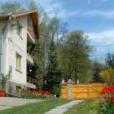Information
Miercurea-Ciuc (Hungarian: Csíkszereda, German: Szeklerburg) is the county seat of Harghita county, Romania. It is located in the Transylvania historical region.
Demographics
According to the 2002 census the city has a population of 42,029, of whom 34,388 or 81.8% are Székely Hungarians.
Description
Miercurea-Ciuc is the county seat of Harghita county. The city lies in the east of the county in the Olt valley. Before 1918, Miercurea-Ciuc was the capital of Csík County in the Kingdom of Hungary.
After the city became the county seat of Harghita in 1968, a new socialist style city centre was constructed. It began to develop into the centre of Szekler culture and identity. In 2001 the old Harghita Hotel was converted into the Sapientia Transylvanian Hungarian University, which, although privately run, is the first Hungarian university in Romania. Other cities in Transylvania also have Sapientia University faculties. Since the university opened it has been attracting more and more young people and intellectuals.
Miercurea-Ciuc is one of the coldest towns in the whole of Romania, with winter temperatures often going under -30°C, making the city ideal for winter sports. The Miercurea-Ciuc ice rink, Vákár Lajos műjégpálya, annually hosts the national ice hockey championships, often won by the local team, Csíkszeredai Sport Club. Another source of pride in the city is the famous Ciuc beer (also known as Csíki sőr), considered by some to be the best beer in Romania.
Petőfi Street is the main pedestrian street in the city. It has a young feel thanks to the student presence, and houses many trendy restaurants and fashionable cafés. Their Szekler specialities conjure up images of a small town in Western Europe.
In the city centre, the main point of interest is the Mikó Castle, built in a late Renaissance style. The original more decorative castle was raised in the 17th Century on the orders of Ferenc Mikó Hídvégi, the personal advisor of Gabriel Bethlen, the governor of Transylvania at the time. Much of the castle was destroyed in 1661 during the Tatar raids, but it was rebuilt at the beginning of the 18th century and was mainly used as a barracks; today it houses the Csík Székely Museum. Behind the castle you will find a small Skanzen (museum village), consisting of a few traditional Csík houses and wooden gates. Across the road from the castle is the city hall built in 1886, originally the county hall of the old Hungarian crown county. Beside the castle is the 1904 Courthouse. Soon the city will have a new church designed by the Hungarian architect Imre Makovecz.
A few kilometres to the east of the city centre is the Csíksomlyó church. A large meadow nearby is the site of a yearly Roman Catholic pilgrimage which attracts Hungarians from all over the world, predominantly from Hungary and the Székely and Csángó from Romania. The event attracts several hundred thousand people and is held on Whit Sunday in June. It is called the "Csíksomlyó Saint's Day" (Hungarian: Csíksomlyói Búcsú).
External links
Harghita CountyMunicipalities in Romania

 English
English









